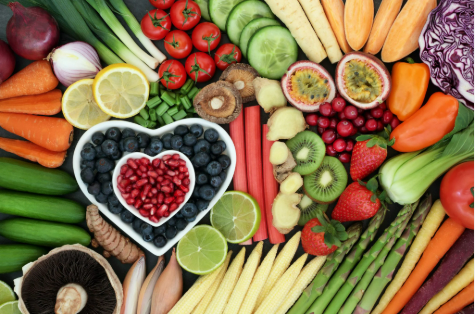
Comfort food is more than just a warm bowl of soup or a slice of chocolate cake—it’s an experience, a memory, and a sense of home served on a plate. Whether it’s mac and cheese, mashed potatoes, a steaming bowl of pho, or freshly baked bread, comfort food transcends mere sustenance. It’s emotional nourishment. But how did this idea of food as comfort develop? And why do we turn to these dishes in times of stress, sadness, or nostalgia?
To understand our deep love for comfort food, we need to look at its historical origins, psychological impact, cultural variations, and evolving role in modern life.
What Is Comfort Food?
The term “comfort food” was first officially recognized in the 1960s. A 1966 article from the Palm Beach Post described it as food associated with childhood and home-cooked meals, offering solace during periods of emotional distress. But of course, the concept had existed long before it had a name.
Comfort food typically refers to dishes that evoke a sense of familiarity, safety, and warmth. They are often rich in carbohydrates or fats, easy to prepare, and heavily tied to family traditions or cultural roots. The significance of comfort food isn’t in its ingredients, but in its emotional resonance.
The Historical Roots of Comfort Food
Food has always played a central role in human rituals, celebrations, and mourning. In ancient societies, communal meals were a way of strengthening bonds and providing emotional security. For example, in ancient Rome, banquets were used to express camaraderie and community. In Jewish culture, the Sabbath meal is a weekly tradition steeped in comfort and family.
During the Industrial Revolution, when people began migrating to cities and away from family farms, traditional foods from “back home” became even more emotionally meaningful. Immigrant communities across the globe clung to their culinary roots as a way to preserve identity in unfamiliar surroundings. Food became a portable form of heritage—one that could transport people back to another place and time with just a bite.
In the American South, dishes like fried chicken, biscuits, and gravy carried emotional weight passed down through generations, particularly in Black communities where food was deeply linked to survival, storytelling, and resistance.
Similarly, Japanese miso soup, Indian dal, or Italian pasta dishes are not only nourishing but steeped in cultural and familial significance that stretches back centuries. These foods evolved over time not only for taste and nutrition but for connection and comfort.
The Psychology of Comfort Food
Why does food hold such power over our emotions?
1. Memory and Nostalgia
Comfort foods are often those we first encountered in childhood, cooked by a parent or grandparent. The sense of smell and taste is closely tied to memory; eating these foods can spark vivid emotional recall. A whiff of cinnamon might bring you back to your grandmother’s kitchen. A spoonful of stew might remind you of snowy days at home.
According to psychologists, this is due to the limbic system—the part of the brain involved in emotion and memory. The olfactory bulb, responsible for smell, is directly connected to the amygdala and hippocampus, which process emotion and memory. So when you smell or taste a familiar dish, your brain can trigger an emotional memory that feels comforting or safe.
2. Stress Relief
Scientific studies have shown that people often crave high-fat, high-carb foods when they’re stressed or sad. These foods can increase serotonin and dopamine levels—the “feel good” chemicals in the brain. While not a long-term fix for emotional issues, these temporary spikes in mood can create the perception of comfort and relief.
Comfort food also often involves ritual: curling up on the couch with a favorite dish, or eating the same meal every birthday. These small rituals can bring structure and reassurance during uncertain times.
Cultural Variations of Comfort Food
One person’s comfort food might be another’s curiosity. Comfort food is deeply cultural, and what we associate with warmth and security is largely shaped by our upbringing and environment.
United States
In the U.S., comfort food is often linked with Southern cooking—fried chicken, mac and cheese, cornbread, mashed potatoes. But regional variations abound: New Englanders might find solace in clam chowder, while Midwesterners crave casseroles or pot roast.
Italy
For many Italians, comfort food is pasta—spaghetti Bolognese, lasagna, or a simple bowl of cacio e pepe. These dishes are often connected to Sunday family dinners and home-cooked traditions passed down through generations.
India
In Indian households, khichdi—a simple dish made of rice and lentils—is a go-to comfort meal. It’s light, nourishing, and tied to feelings of being cared for, especially when sick or tired.
Japan
Miso soup, rice, and grilled fish are traditional comfort foods, but for some, it might be a steaming bowl of ramen or a bento box packed with childhood favorites.
Latin America
In Mexico, pozole and tamales often bring comfort, while arroz con leche (rice pudding) is a nostalgic dessert for many. These dishes are often tied to festivals, family gatherings, and national identity.
Middle East
Warm dishes like lentil soup, stuffed grape leaves (dolma), and slow-cooked lamb stews are common comfort foods throughout Middle Eastern cultures, linked to hospitality and family gatherings.
The common thread is that comfort food is almost always shared food—rooted in connection, memory, and tradition.
Comfort Food in Modern Times
Pandemic and Emotional Eating
The COVID-19 pandemic sparked a massive return to comfort cooking. With restaurants closed and people isolated at home, many turned to baking bread, making stews, and revisiting childhood recipes. Social media feeds were filled with banana bread, sourdough starters, and pasta from scratch.
This global return to comfort food wasn’t just about filling time—it was about filling an emotional void. Cooking and eating familiar foods brought people a sense of routine, stability, and self-care during a time of great uncertainty.
The Rise of Gourmet Comfort
In recent years, comfort food has also evolved into upscale dining. Chefs around the world are reimagining comfort classics—lobster mac and cheese, truffle mashed potatoes, gourmet burgers with brioche buns. This trend reflects a desire to blend nostalgia with novelty, creating dishes that are emotionally and gastronomically satisfying.
Health-Conscious Comfort
As awareness of health and wellness grows, people are also looking for ways to make comfort food healthier without losing its soul. Cauliflower mashed “potatoes,” vegan chili, baked alternatives to fried favorites, and gluten-free versions of childhood dishes are all part of the new comfort food canon.
Even plant-based comfort food has become a booming trend. Vegan mac and cheese, jackfruit pulled “pork,” and cashew-based ice creams show how people want to feel good physically and emotionally when they eat.
Why Comfort Food Endures
Comfort food endures because it taps into our deepest needs: the need to feel safe, loved, remembered, and connected. It’s not just about flavor; it’s about meaning.
Comfort food bridges the past and present. It carries traditions forward. It binds families and communities. Whether it’s shared around a table or eaten alone during a quiet moment of introspection, comfort food offers a kind of sustenance that goes beyond the physical.
In an age of fast food and fleeting digital experiences, the enduring love for comfort food reminds us of what it means to be human: to crave not just nutrients, but memories, warmth, and home.
Conclusion: The Food of the Heart
In every corner of the world, comfort food has its place. It shows up at weddings and funerals, on holidays and sick days, during personal victories and heartbreaks. It offers more than calories—it offers connection, continuity, and care.
We love what we eat not just for taste, but for what it represents. Comfort food is, ultimately, the food of the heart. It’s how we remember who we are, where we came from, and what we need when words aren’t enough.
So the next time you reach for that bowl of soup or that extra slice of pie, don’t feel guilty—feel grateful. You’re partaking in a rich, emotional tradition that stretches across generations, cultures, and continents. It’s not just food. It’s comfort, history, and love.





















